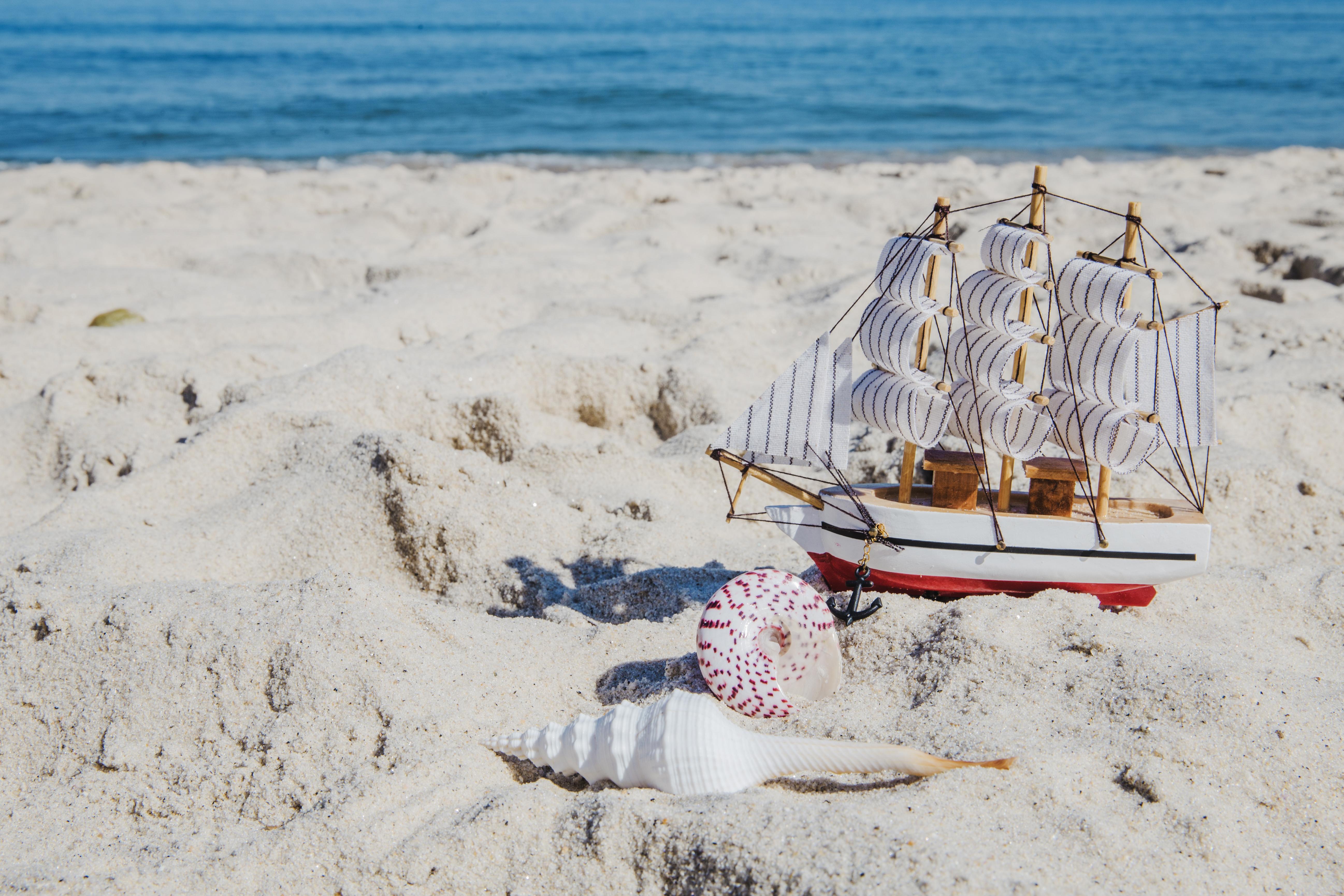The Ultimate Guide to Limassol, Cyprus: Where Ancient History Meets Modern Luxury

Introduction
Limassol (Lemesos in Greek) is a coastal gem on Cyprus’s southern shore, where sun-drenched beaches meet layers of history, a burgeoning wine culture, and a vibrant modern pulse. Whether you’re drawn by ancient ruins, seaside relaxation, gastronomic adventures, or festivals under starry skies, Limassol offers a compelling blend. In this exclusive travel guide, we’ll walk you through everything you need to plan a memorable trip: from when to visit and where to stay, to hidden beaches, day trips, culture, food, safety, and a full one-week itinerary to get the most out of your stay. By the end, you’ll have all the tools to explore Limassol like an insider and tailor your own ideal trip.
Snapshot: Where Limassol Sits & Quick Practical Facts
Limassol is situated on Cyprus’s southern coast, in the Akrotiri bay region, approximately midway between Cyprus’s two main airports (Larnaca and Paphos). According to travel sources, Limassol is the island’s second-largest city and a major port and tourist center.
Location & Orientation
- If you land at Larnaca International Airport (LCA), you’ll travel about 55–60 km southwest to reach Limassol (roughly 40–45 minutes by car under good traffic).
- From Paphos Airport (PFO), the drive via the A6 motorway is about 60–70 km and takes approximately an hour. The A6 connects Limassol and Paphos smoothly.
- The city lies within the coastal plain, with the Troodos Mountains rising inland—offering a dynamic backdrop between sea and hills.
Quick Facts & Travel Logistics
- Population & scale: Limassol’s urban area houses nearly 195,000 people; the broader district population is around 260,000.
- Currency & language: Cyprus uses the euro (€). The official language is Greek, but English is widely spoken in tourist areas and among service staff.
- Transport links: Taxis, local buses, and pre-arranged airport shuttles or private transfers are common. Apps or local operators (e.g. Kapnos, local taxi apps) can ease booking.
- Safety & healthcare: Cyprus is considered generally safe (U.S. Department of State designates “normal precautions” for travel). Local pharmacies and good clinics are available; non-urgent emergencies should be handled in English-speaking hospitals.
- Connectivity & tips: Get a local SIM or eSIM for maps and ride apps. Always carry a small amount of cash (for markets, tips) along with a credit/debit card.
From here, we’ll unfold how to pick the best time to visit, what to see, and how to maximize your time in this versatile city.
Best Time to Visit & Weather
Exclusive Travel Guide to Limassol in Cyprus strengths is its long tourism season—its climate and geography allow comfortable travel from spring through autumn. To make good choices, here’s a look at seasons, weather, and packing advice.
Climate Overview & Seasonality
Cyprus has a subtropical Mediterranean climate with mild, rainy winters and hot, dry summers. On the coast, daytime temperatures average around 24 °C annually, while nighttime lows may drop to 14 °C in cooler months.
- Summer (July–August): Peak heat, often hitting 30–33 °C or higher. Dry, intense sunshine.
- Spring (April–June) & Autumn (September–October): Warm but more tempered—excellent for sightseeing with fewer crowds.
- Winter (December–February): Cooler and wetter; daytime highs around 14–17 °C, occasional rain. Travel is still possible but expect more cloudy days.
Best Months & What to Do
- Best for beach & sun: Late May to early October
- Best for sightseeing & comfortable temperatures: April–June & September
- Avoid: deep winter (though mild) if you want full beach days and many attractions may have shorter hours.
Packing & Practical Tips
- Essentials: breathable clothes, sunglasses, strong sunscreen (SPF 30+), hat, reusable water bottle.
- For evenings: light sweater or shawl (especially in spring/fall).
- Shoes: comfortable walking shoes (cobblestones, archaeological sites).
- Rain gear: a compact umbrella for occasional winter showers.
- Advance tip: if traveling in summer, book months ahead (July–August is peak demand).
The next sections lead you through what to see, where to walk, how to unwind by the water, and how to plug into Limassol’s cultural pulse.
Limassol’s Highlights: Old Town & Medieval Castle (200 words)
The heart of Limassol lies in its Old Town, where winding lanes, historic facades, and local life coexist. At its center stands the Medieval Castle, which today houses the Cyprus Medieval Museum.
Exploring the Old Town & Streets
Stroll through narrow alleys, past cafés, boutique shops, and artisan stalls. Makariou Avenue (the city’s main thoroughfare) and Anexartisias Street are among the busiest shopping zones, lined with local stores, fashion boutiques, and cafés. In seasons of festivals or parades (Carnival especially), the Old Town becomes a stage for lively community events.
Medieval Castle & Cyprus Medieval Museum
- The castle dates from the 15th century, though built over earlier fortifications. It’s a compact but evocative structure near the old port.
- Inside, the Cyprus Medieval Museum displays ceramics, sculptures, tombstones, and medieval artifacts.
- Best times: visit in early morning or late afternoon to avoid midday heat; check museum opening hours (often 09:00–17:00, but vary in low season).
- Tip: climb to the ramparts for panoramic views across rooftops toward the sea and the marina.
Suggested Walking Route
Begin at the castle, then head to Saripolou Square, cross through narrow lanes, and emerge near the promenade (Molos area). Along the way, explore hidden corners, local cafés, and photo-worthy architecture.
By grounding yourself in Limassol’s old quarter, you begin to feel the character of the city beyond a mere resort town.
Limassol Marina & Promenade: Luxury, Dining, and Sunset
On the edge of the sea, the Limassol Marina is a showcase of modern coastal luxury, framed by elegant yachts, upscale restaurants, chic shops, and a nightly ambiance that draws visitors for strolling and dining.
What You’ll Find at the Marina
- A modern waterfront complex offering berths for yachts, boutiques, galleries, cafés, and gourmet dining (Mediterranean, seafood, fusion).
- Evening lighting transforms the space into a romantic promenade; local and international visitors converge here.
- Nearby “Molos” sculpture park and promenade extend the walking experience beyond the marina.
Dining & Waterfront Experience
For dinner, it’s wise to reserve ahead—peak hours (after 19:30) can be busy. Many restaurants offer terrace seating right by the water, perfect for watching yachts and enjoying sea breezes. Try one seafood or Mediterranean fine dining spot, and one casual taverna, to balance luxury and local flavor.
Sunset Walks & Practicalities
The ideal time to arrive is just before sunset, when golden light softens the harbor. After dinner, wander along the marina and adjacent promenade. There is drop-off parking and limited on-site visitor parking—if your hotel is nearby, consider walking or short taxi rides.
The Marina is a nightly anchor: dine, stroll, and absorb the sea-air energy before exploring Limassol’s food and nightlife further on.
Beaches & Coastal Activities
No Cyprus trip is complete without sea time. Limassol’s coastal stretch features a mix of Blue Flag beaches, hidden coves, and watersports. Below’s a guided approach to picking your day by the sea.
Top Beaches Around Limassol
- Kourion Beach: About 17 km west, this Blue Flag beach features a mix of sand and pebbles, clear water, facilities (showers, toilets, sunbeds), and is adjacent to the ancient site of Kourion.
- Governor’s Beach: Located ~30 km east, this shoreline offers deep clear water, sheltered coves, and a more secluded feel, accessible via steps down white cliffs.
- Lady’s Mile: A long sandy stretch closer to Limassol, ideal for families and relaxed sunbathing.
- Dasoudi Beach: More urban, with palms and local cafés, within city reach.
- Akti Olympion promenade: a walking coastal park extending 7 km from the municipal gardens to the seafront.
Activities & Booking
- Water sports: snorkeling, paddleboarding, windsurfing. On beaches like Kourion, windsurfing is a known option.
- Boat trips: half-day or sunset cruises depart from the marina or beach clubs.
- Facilities: Most organized beaches offer umbrellas, sunbeds, showers, changing rooms, lifeguards (April–October in service).
- Access: many beaches have car parking; for others, use local buses or taxis. Early arrival helps secure shade.
Practical Tips
- Arrive early (before 11 am) to get shade and good spots.
- Bring beach shoes for pebbles, especially near rocky points.
- Stay hydrated and reapply sunscreen, especially midday.
- Combine a beach day with cultural stops (e.g. visit Kourion ruins in the morning, then relax at the beach in afternoon).
The next section turns inland to Limassol’s cultural heartbeat.
Culture & Festivals: Carnival, Wine Festival, Local Traditions
Limassol isn’t just sun and sea: its calendar is rich with festivals, music, theater, and wine traditions that draw visitors long after the beach season ends.
Carnival & Cultural Parades
Limassol hosts Cyprus’s largest Carnival (February–March), a two-week event where the city fills with floats, masquerade balls, street performers, and family-friendly parades. Royal Caribbean lists this as one of the top local traits. Local shops often close mid-day during carnival parades; plan accordingly.
Wine & Koumandaria Festivals
The Limassol Wine Festival is held annually in late August to early September in the Public Gardens, celebrating Cypriot wines (e.g. Commandaria, Zivania). For example, in 2025 it is scheduled from 27 September to 5 October.
Simultaneously, Koumandaria Festival (celebrating the island’s sweet dessert wine) occurs in July in villages around Limassol (Alassa, Laneia, Monagri).
- International Festival of Ancient Greek Drama in the Kourion Amphitheatre (July–August)
- Ethnic Festival, Kypria (September–October), Documentary Festival, and sporting events.
Local Traditions & Cultural Experiences
- Enjoy live folk music nights in tavernas (especially near Old Town).
- Art studios open to the public in autumn during Open Studios events.
- Sip wine at small boutique wineries in the Limassol hills (e.g. in Erimi, Monagri).
- Visit Limassol Public Gardens (Municipal Gardens): a 60,000 m² green space with trees, the zoo, open-air concerts, and as venue during the Wine Festival. Timing your trip to overlap with a festival can add immersive cultural depth to your stay—just be sure to book lodging early for peak festival periods.
Day Trips & Nearby Must-Sees
Limassol’s strategic location makes it a superb base for exploring Cyprus’s ancient sites, mountain hamlets, and coastal legends. Here are the top side trips you shouldn’t miss.
Ancient Kourion
Perched on cliffs overlooking the Mediterranean, Kourion is one of Cyprus’s most spectacular archaeological sites. Its Greco-Roman theatre, mosaics, and panoramic sea view make it a highlight. Guided or self-guided tours are possible; combine with a beach stop at Kourion Beach.
Kolossi Castle & Wine Areas
Kolossi, a medieval crusader fortress, sits just inland. It is intimately tied to local wine history and lightly off the beaten path. The castle once played a role in era’s wine trade, including the famed Commandaria wine. Around Kolossi you’ll find boutique vineyards offering tastings and vineyard walks.
Aphrodite’s Rock & Paphos
Aphrodite’s Rock (Petra tou Romiou), the legendary birthplace of the goddess, lies along the coast between Limassol and Paphos. Combined with a full-day Paphos excursion (Roman mosaics, tombs, harbor) it makes for a rewarding west-coast day trip.
Troodos Mountains
Head inland to the Troodos range for cooler air, hiking trails, Byzantine churches with frescoes (e.g. Kykkos, Agios Nikolaos tis Stegis), and rural villages. It’s a sharp contrast to the coast and ideal on hot days.
Logistics & Tips
- Self-drive is convenient, but guided tours save planning stress.
- Kourion + Kolossi can be done in a half-day.
- For full-day trips (Paphos or mountain), depart early (7–8 am) and return early evening.
- Check opening times and traffic (weekends may be busier).
- Use the A6 motorway when going west; inland roads for mountain drives.
These excursions let you see Cyprus’s layered history and varied landscapes beyond Limassol’s shoreline.
Food & Drink: What to Eat in Limassol
A trip to Cyprus isn’t complete without indulging in its food, which is a living expression of local ingredients, traditions, and Mediterranean flavor.
Culinary Overview
Cypriot cuisine is built around meze culture: a spread of small dishes shared by the table. Expect grilled halloumi, tzatziki, olives, grilled octopus, local salad, grilled meats (souvlaki), moussaka, and loukoumades for dessert. Seafood, given the coast, is fresh and varied. Limassol also hosts commendable wine production—Commandaria (sweet dessert wine) and local varietals are staples.
Dining by Budget
- Casual / street level: tavernas in Old Town, neighborhoods like Katholiki (many affordable spots).
- Mid-range: family-run restaurants near the Marina and in Germasogeia offering local plates plus international options.
- Fine dining: steps away in the Marina, upscale sea-view venues offering tasting menus.
Wine & Winery Visits
- Visit local wineries in the hills (Erimi, Omodos, Monagri) for tastings.
- At the Limassol Wine Festival, dozens of wines and workshop seminars are available.
- Tip: When ordering meze, ask whether it’s “small” or “large” set so you don’t over-order.
Practical Tips
- Ask for local wine pairings (staff often happy to suggest).
- Reserve tables during festival season or summer weekends.
- In more rural tavernas, carry some cash.
- Don’t rush meals—in Cyprus, dining is meant to be savored over time.
Your days of exploration deserve evenings of flavorful reward.
Where to Stay: Neighbourhoods & Accommodation Picks
Your base in Limassol plays a big role in how you experience the city. Here’s a detailed look at neighborhoods and lodging types to suit your style.
Best Neighbourhoods
- Old Town / Castle area: ideal for walking access to historic sights, cafés, and the marina.
- Marina / Germasogeia: for those who want luxury, nightlife, and proximity to beach clubs.
- Agios Tychonas / Amathus: more resort-style, quieter, and closer to premium beach areas.
- Zakaki / Lady’s Mile corridor: quieter coastal stretch, good for families or travelers looking for relaxed beach access.
Types of Accommodation
- Boutique hotels in Old Town or Marina: stylish, personalized, often with breakfast included.
- Seafront resorts in Amathus / Agios Tychonas: full-service amenities, pools, on-site restaurants.
- Self-catering apartments / Airbnb: good for longer stays or travelers wanting kitchen access.
- Budget hostels / guesthouses: smaller rooms, shared facilities, in the central zone for convenience.
Booking Tips & Considerations
- Reserve at least 2–3 months ahead during summer or festival season.
- Look for sea views or balcony upgrades if your budget allows—they add to the experience.
- Check if breakfast is included (some boutique places don’t).
- Consider parking, proximity to bus stops or taxi availability.
- In Old Town, narrow streets may limit car access—ask if your lodging includes a drop-off or shuttle.
Choose where you stay to match how mobile or relaxed you intend your day-to-day trip to be.
Getting Around, Money, Safety & Useful Local Tips
Navigating Limassol smartly will ensure your time is spent exploring—not fighting logistics.
Transport Within Limassol
- Local buses serve major routes; check schedules with apps or hotel staff.
- Taxis are plentiful—agree on a price or verify meter start.
- Car rental gives flexibility for day trips, though parking in Old Town can be tight.
- Many key urban areas are walkable—especially Old Town, Molos promenade, and Marina.
Money & Payments
- Use cards (Visa, Mastercard) in most restaurants, hotels, and shops; but small vendors or rural tavernas may prefer cash.
- ATMs are widely available; notify your bank before travel to avoid holds.
- Tip: In North American style, 10 % is acceptable; in local tavernas, rounding up is common.
Safety & Health
- Cyprus is generally safe; the U.S. State Department classifies Cyprus under “normal precautions.
- Avoid unmarked trails on rocky terrain, swim within designated zones, be cautious under strong sun midday.
- Emergency number: 112 across EU.
- Keep hydration and sun protection as constant priorities.
Insider & Local Tips
- Many shops close midday (1–4 pm) especially off-season; plan errands before lunch.
- Sunday hours are limited—supermarkets or shops may only open part day.
- Use local apps or hotel concierge help for bus timetables or arranging transfers.
- Keep a day bag ready with water, sunscreen, map, and snacks for spontaneous explorations.
With these practicalities handled, you can move through Limassol confidently and flexibly.
Conclusion
By now you’ve seen how Limassol combines multiple faces: ancient ruins perched on dramatic cliffs, sunlit beaches, wine heritage, modern luxury, buzzing festivals, and neighborhoods rich with personality. It serves both as a compelling destination in itself and as a springboard for exploring wider Cyprus.







